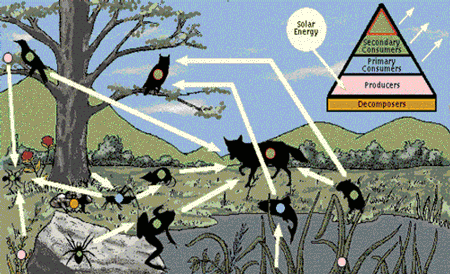You are what you eat
Food Web and its Function
What is a Food Web?A food web is a diagram of the links among species in an ecosystem – essentially who eats what. A food chain shows only the organisms that contribute to the diet of the top consumer. Figures 1 and 2 show examples of typical terrestrial and aquatic food webs, respectively. The triangular diagram in Figure 1 is an example of the main components of a food web.
|
|
|||||||||||||
Please contact Carol Kendall (ckendall@usgs.gov)
for questions and comments regarding this page.
This page was last changed in June 2003.
To the USGS Home Page
To the Water Resources Information Home
Page

